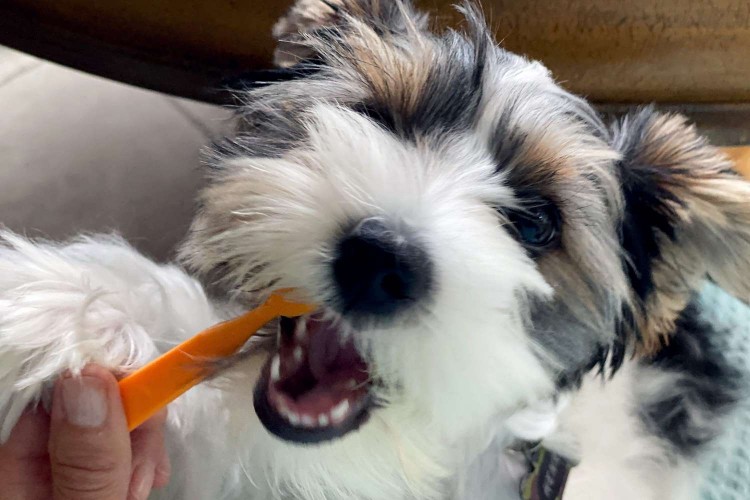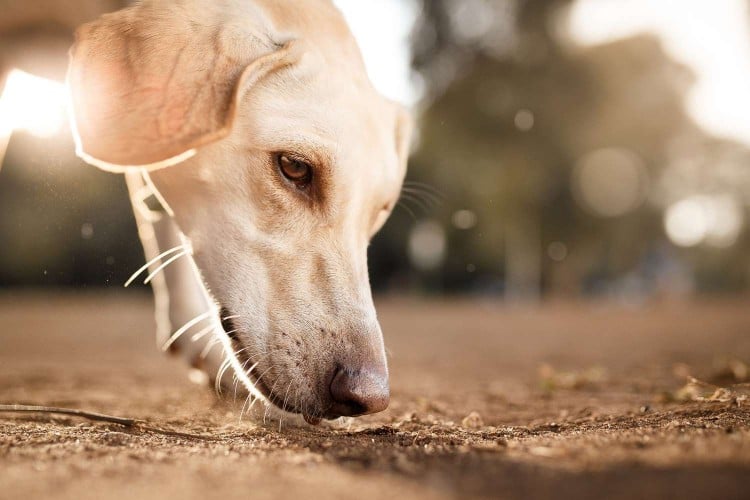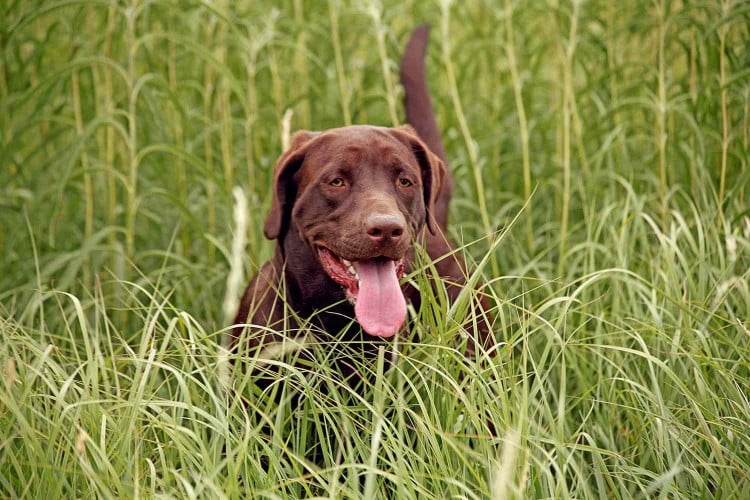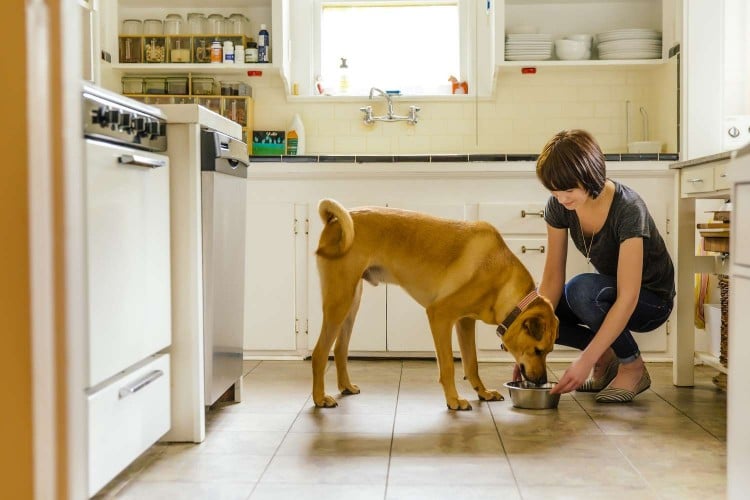We independently evaluate all recommended products and services. If you click on links we provide, we may receive compensation. Learn more.

Tooth decay is rather rare in canines. In fact, according to the Merck Veterinary Manual, "Dental caries [which we know as cavities], or bacterial infections of the teeth, are common in people, uncommon in dogs, and essentially nonexistent in cats." Cavities are the primary reason for rotten teeth in dogs (humans, too) but only affect about 10 percent of canines.
According to Merck, dogs seldom have problems with tooth decay and rotten teeth because:
- Their saliva is more alkaline, rather than acidic.
- Canine teeth have fewer fissures and pits.
- Their diet is lower in carbohydrates.
Not being prone to cavities and tooth decay is super news for our canine friends. Nevertheless, it's still important to maintain your dog's dental health and work with a veterinarian on a plan to avoid periodontal disease, which is the top dental problem dogs have. If you suspect an issue with dog tooth decay—either in your pupper or one you're fostering who might not have had proper dental hygiene—here's what you should know.
Signs Your Dog Has Rotten Teeth
Dog tooth decay is like human tooth decay, so we'll share a definition from the American Dental Association, which explains it as "the destruction of tooth enamel, the hard, outer layer of teeth. Plaque, a sticky form of bacteria, constantly forms on teeth, and acids attack enamel." When enamel breaks down, a hole appears, and more bacteria enters this void, or cavity. This causes decay. No wonder we're told to brush and floss regularly—it helps keep plaque and tartar from forming.
It's unlikely you'll be able to spot a dog's rotten tooth symptoms with the naked eye, regardless of how many pooch smooches give you an opportunity to look into his mouth.
"Unfortunately, pets rarely show any signs of dental disease that even the most observant and caring owner would notice," says Tony M. Woodward, DVM, AVDC, a board-certified veterinary dentist, and owner of Montana Pet Dentistry and Oral Surgery in Bozeman, Mont. "Cavities can sometimes be seen on an initial oral exam, but are more typically found after teeth have been cleaned and a doctor is performing a detailed oral exam on an anesthetized patient."
Merck notes that "In dogs, caries usually occur on the occlusal [biting] surfaces of molar teeth. It has the appearance of a brown–to–black cavitated lesion with a soft surface into which a sharp explorer tip can penetrate and 'stick.'" This is why we usually can't spot a cavity—we're not able to do that kind of probing.
There really aren't many symptoms we might associate with decay. "Occasionally owners notice a bad odor from the mouth or so much calculus (tartar) on the teeth that they're completely covered," Woodward says. "Pain from dental disease comes on slowly and the pets just learn to deal with it. What option do they have? They keep eating and playing, but might act just a little older."
How are rotten teeth possibly connected with periodontal disease, also known as gum disease, in dogs? A buildup of plaque and tartar might be severe enough to cause problems, but there's not a set series of stages for dog tooth decay like with periodontal disease.
Dog Rotten Teeth Removal and Treatment
Woodward says dog tooth decay treatment is similar to human cavity treatment.
"The diseased part of the tooth is removed with a dental drill and the defect is then restored (filled) with a light, cured tooth-colored filling material called composite. The restoration is then contoured correctly, smoothed and the edges sealed with a bonding agent," he says. "This procedure requires additional training and good attention to detail. Most general practitioners aren't able to perform dental restorations."
In rare cases, decayed teeth are removed because of severe gum disease, or a fracture compromised the center of a tooth, known as the pulp. There are a couple of methods veterinary dentists use for extraction. Under no circumstances should you ever attempt to pull a dog's rotten tooth at home yourself.
How to Prevent Future Tooth Decay in Dogs
Like humans, dogs often have problems with gingivitis, which is inflammation and infection found in the gum line and the first stage of periodontal disease. The most effective home remedy for tooth decay is daily brushing, especially on the chewing surfaces in the back of the mouth. You can try certain tartar-removing chew toys and dental treats, too.
More importantly, establish a routine of annual professional cleaning and checkups so a veterinary dentist can identify potential issues and treat them quickly.
How Much Will Having My Dog's Teeth Cleaned Cost?
This dedicated attention to your pup's chompers will keep them healthy for life. And no flossing required!









Comments on " Signs of Tooth Decay in Dogs and How to Get Your Pup Smiling Again" :